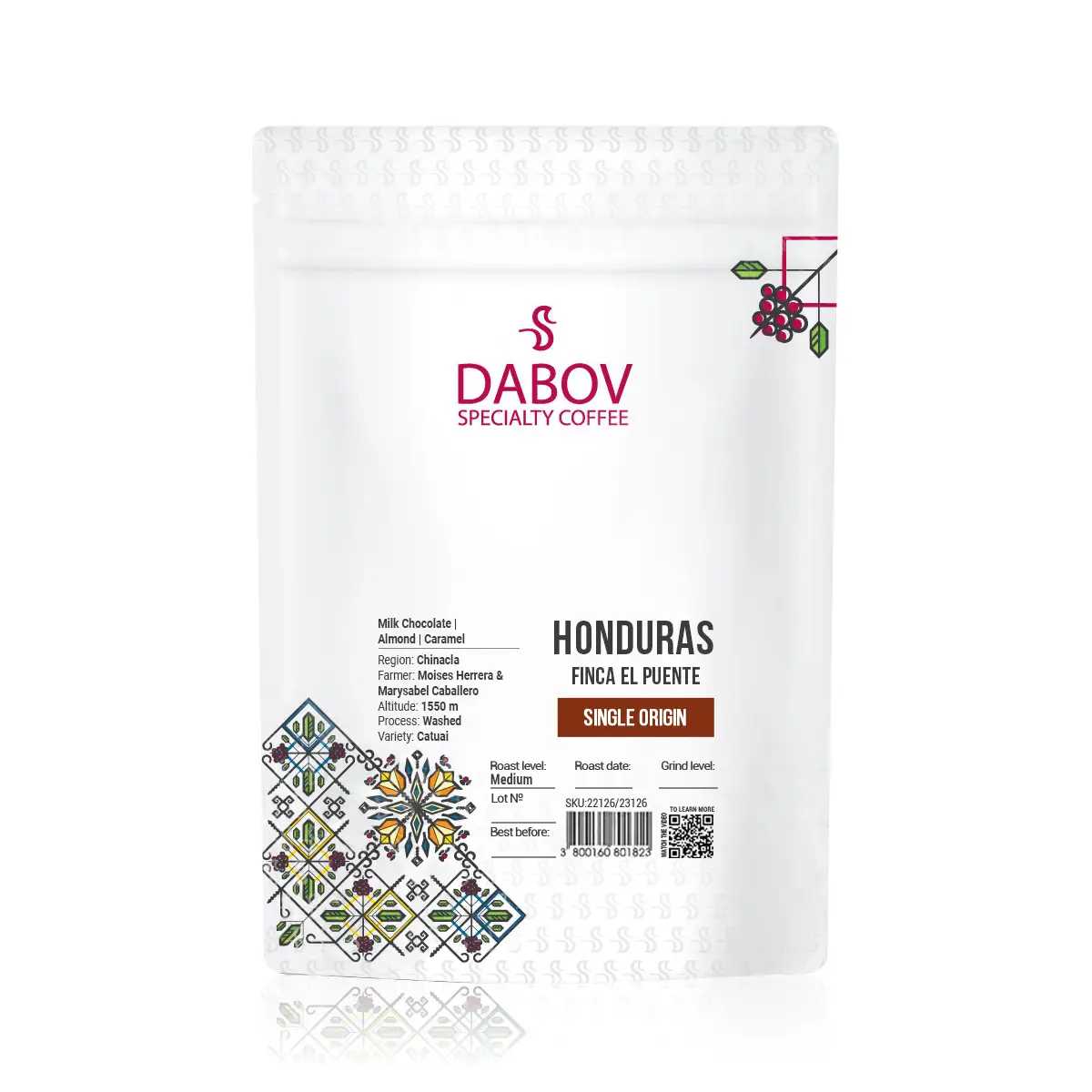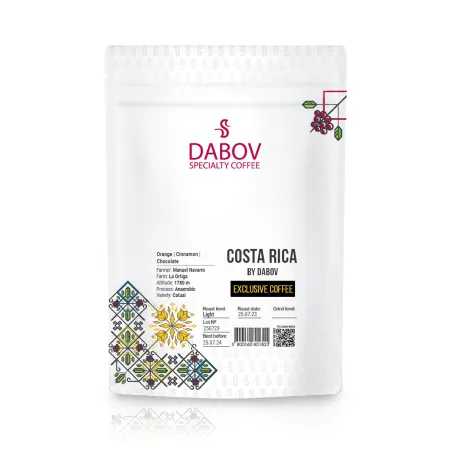How Climate Change is Impacting Coffee Cultivation
Climate change poses a formidable challenge to coffee cultivation worldwide. This article examines its profound effects on the coffee plant's growth conditions, regions, and quality. With rising temperatures and unpredictable rainfall patterns, coffee production is facing declining yields and altering flavor profiles. From Latin America to East Africa, case studies reveal the urgent need for adaptation. Sustainable practices and innovative technologies are not just options; they're vital for survival. As consumers, we can take actions that support sustainable coffee practices and contribute to a resilient future for coffee farming.
Climate change has become one of the most pressing global issues of our time, affecting various aspects of our lives and ecosystems. One area where its impact is particularly significant, yet often overlooked, is coffee cultivation. As the world's second most traded commodity after oil, coffee plays a crucial role in the global economy and the livelihoods of millions of farmers. This article delves deep into the intricate relationship between climate change and coffee production, exploring the challenges faced by coffee growers and the innovative solutions being developed to ensure the future of this beloved beverage.
Understanding Coffee Cultivation
The Coffee Plant and Its Needs
Coffee plants, primarily of the Coffea arabica and Coffea canephora (robusta) species, are notoriously particular about their growing conditions. These plants thrive in specific environmental parameters that have been finely tuned over centuries of cultivation. Arabica coffee, which accounts for approximately 60-70% of global coffee production, prefers temperatures between 15-24°C (59-75°F) and annual rainfall of 1500-2000mm. The plants require well-draining, slightly acidic soil with a pH between 6.0 and 6.5. Additionally, they benefit from altitudes ranging from 1000 to 2000 meters above sea level, where cooler temperatures and reduced pest pressure contribute to higher quality beans.
Robusta coffee, on the other hand, is more tolerant of warmer conditions and can grow at lower altitudes. It prefers temperatures between 22-30°C (72-86°F) and can withstand higher rainfall levels. This hardiness makes robusta more resistant to some climate change effects, but it still faces challenges in extreme weather conditions.
The specific microclimates in which coffee grows best are often referred to as the "Bean Belt," a region that circles the globe roughly between the Tropics of Cancer and Capricorn. Within this belt, factors such as altitude, rainfall patterns, and soil composition create unique terroirs that contribute to the diverse flavor profiles of coffee from different regions.
Overview of Global Coffee Cultivation Regions
Coffee production spans across more than 50 countries, with each region offering distinct characteristics to the global coffee market. The primary coffee-producing regions include:
- Latin America: Countries like Brazil, Colombia, and Honduras are major players in the coffee industry. Brazil, the world's largest coffee producer, is known for its wide variety of flavors due to its diverse microclimates. Colombian coffee, prized for its mild, well-balanced profile, grows in the country's mountainous regions.
- Africa: Ethiopia, the birthplace of coffee, along with Kenya, Uganda, and Tanzania, produces some of the world's most distinctive and sought-after coffees. Ethiopian Yirgacheffe and Kenyan AA are renowned for their bright acidity and complex flavor profiles.
- Asia: Vietnam, the second-largest coffee producer globally, primarily cultivates robusta. Indonesia, particularly the islands of Sumatra and Java, is famous for its full-bodied, earthy coffees. India's Monsooned Malabar offers a unique flavor due to its processing method influenced by monsoon winds.
- Central America: Countries like Costa Rica, Guatemala, and Panama produce high-quality arabica coffees known for their bright acidity and clean, crisp flavors.
Each of these regions faces unique challenges as climate change alters their traditional growing conditions, forcing adaptations in cultivation practices and even shifts in suitable growing areas.
Climate Change and Its Effects on Coffee Cultivation
Rising Temperatures
One of the most significant climate effects on coffee cultivation is the increase in global temperatures. The Intergovernmental Panel on Climate Change (IPCC) projects that global surface temperature will continue to increase by 1.5°C to 2°C over the next two decades. This seemingly small change can have profound effects on coffee plants.
For arabica coffee, which prefers cooler temperatures, even a slight increase can lead to accelerated ripening of coffee cherries. This rapid maturation often results in lower quality beans with less complex flavor profiles. In extreme cases, excessive heat can cause coffee cherries to wither on the branch before reaching full maturity.
Moreover, higher temperatures create more favorable conditions for pests and diseases that affect coffee plants. The coffee berry borer (Hypothenemus hampei), for instance, thrives in warmer climates and has been expanding its range as temperatures rise. This tiny beetle can devastate coffee crops, potentially reducing yields by up to 80% in severe infestations.
Another significant impact of rising temperatures is the upward shift of suitable growing areas. As lower altitudes become too warm for arabica cultivation, farmers are forced to move their plantations higher up mountainsides. This migration not only disrupts established farming communities but also puts pressure on high-altitude ecosystems and reduces the overall land available for coffee production.
Altered Rainfall Patterns
Changes in precipitation patterns are another crucial factor affecting coffee cultivation. Climate change is causing more erratic rainfall, with some regions experiencing prolonged droughts while others face excessive precipitation.
During the flowering stage, coffee plants require a delicate balance of dry and wet periods. A short dry spell triggers the development of flower buds, which then need rainfall to bloom. If the timing of these dry and wet periods is disrupted, it can lead to poor flowering and subsequently reduced yields.
Excessive rainfall can lead to waterlogged soil, promoting the growth of fungi that cause root rot and other diseases. It can also wash away nutrient-rich topsoil, degrading the quality of the growing environment. Conversely, drought conditions stress the plants, leading to stunted growth, reduced cherry size, and in severe cases, plant death.
In regions like Central America, changing rainfall patterns have contributed to the spread of coffee leaf rust (Hemileia vastatrix), a fungal disease that has caused billions of dollars in damages to the coffee industry. The alternating wet and dry conditions create ideal circumstances for the fungus to thrive and spread rapidly across plantations.
The Impact of Climate Change on Coffee Production
Declining Yields
The combined effects of rising temperatures and altered rainfall patterns are already manifesting in declining coffee yields across various regions. A study published in the Proceedings of the National Academy of Sciences predicts that climate change could reduce coffee-growing areas by up to 50% by 2050.
In Central America, a severe outbreak of coffee leaf rust in 2012-2013, exacerbated by climate change, led to a 15-25% reduction in coffee production. This outbreak affected over 50% of the coffee-growing area in Central America, causing an estimated $500 million in damages and job losses for nearly 350,000 coffee workers.
Similarly, in Brazil, severe droughts in 2014 and 2021 significantly impacted coffee production. The 2014 drought led to a 15% decrease in coffee exports, while the 2021 drought, combined with unexpected frosts, is expected to reduce Brazil's coffee output by up to 30% in the 2021/2022 crop year.
These examples highlight the vulnerability of coffee production to climate change and the potential for significant economic impacts on coffee-producing countries and communities.
Quality Degradation
Beyond quantity, climate change also affects the quality of coffee produced. The unique flavor profiles that coffee enthusiasts prize are a result of the specific growing conditions in each region. As these conditions change, so do the characteristics of the coffee.
Higher temperatures can lead to faster maturation of coffee cherries, resulting in less complex flavor development. This can lead to coffee that tastes flat or lacks the nuanced acidity and aroma that specialty coffee buyers seek.
A study conducted by the World Coffee Research organization found that as temperatures rise, the accumulation of key chemical compounds responsible for coffee's flavor and aroma is altered. This could lead to a homogenization of coffee flavors, potentially threatening the diverse and unique profiles that different origins are known for.
Moreover, stress from extreme weather events can cause inconsistencies in bean size and density, making it challenging for roasters to achieve consistent results. This variability can impact the overall quality and marketability of coffee from affected regions.
Adaptation Strategies in Coffee Farming
Sustainable Coffee Farming Practices
In response to these challenges, many coffee farmers and organizations are turning to sustainable farming practices to mitigate the impacts of climate change. These methods not only help in adapting to changing conditions but also contribute to overall environmental conservation.
- Agroforestry: This practice involves integrating trees and shrubs into coffee plantations. The trees provide shade, which can help regulate temperature and moisture levels. They also contribute to soil health through leaf litter and help prevent erosion. Studies have shown that shade-grown coffee plants are more resilient to climate fluctuations and produce beans with more complex flavor profiles.
- Water Management: Implementing efficient irrigation systems and water harvesting techniques can help farmers cope with irregular rainfall patterns. Techniques such as drip irrigation, which delivers water directly to the plant roots, can significantly reduce water usage while ensuring plants receive adequate hydration.
- Soil Conservation: Practices like contour planting, terracing, and the use of cover crops help prevent soil erosion and maintain soil fertility. Healthy soils are better able to retain moisture and nutrients, making coffee plants more resilient to climate stresses.
- Organic Farming: By eliminating synthetic pesticides and fertilizers, organic farming practices promote biodiversity and soil health. This can create more resilient ecosystems that are better equipped to withstand climate changes.
- Crop Diversification: Planting other crops alongside coffee can provide additional income streams for farmers and help mitigate risks associated with coffee crop failures. This practice also contributes to biodiversity and can improve overall ecosystem health.
Innovative Agricultural Technologies
Advancements in agricultural technology are providing new tools for coffee farmers to adapt to changing climatic conditions:
- Climate-Resilient Varieties: Research institutions and coffee companies are developing new coffee varieties that can withstand higher temperatures, require less water, or resist common pests and diseases. For example, the F1 hybrid varieties developed by World Coffee Research have shown promising results in terms of yield, quality, and climate resilience.
- Precision Agriculture: The use of sensors, drones, and satellite imagery allows farmers to monitor their crops more closely and make data-driven decisions. This technology can help optimize water usage, detect early signs of pest infestations or diseases, and predict optimal harvest times.
- Genetic Mapping: Scientists are working on mapping the coffee genome to identify genes responsible for desirable traits such as disease resistance and heat tolerance. This could lead to the development of more resilient coffee varieties through traditional breeding methods or genetic modification.
- Artificial Intelligence: AI algorithms are being developed to predict climate patterns and their potential impacts on coffee production. This can help farmers make informed decisions about planting times, irrigation schedules, and pest management strategies.
- Blockchain Technology: While not directly related to cultivation, blockchain is being used to improve traceability in the coffee supply chain. This can help ensure that sustainably produced coffee receives fair prices, incentivizing farmers to adopt climate-smart practices.
Case Studies of Climate Change Impact on Coffee
Latin America - Affected Regions
Colombia, one of the world's top coffee producers, has been significantly impacted by climate change. A study by the International Center for Tropical Agriculture (CIAT) found that optimal coffee-growing altitudes in Colombia could shift from the current 1200-1800 meters to 1400-2000 meters above sea level by 2050. This shift would force many farmers to either adapt their practices or abandon coffee cultivation altogether.
In 2011, unusually heavy rains in Colombia led to a 12% drop in coffee production compared to the previous year. The excess moisture created ideal conditions for coffee leaf rust, which affected over 60% of the country's coffee plantations. In response, the Colombian Coffee Growers Federation (FNC) launched an ambitious program to replace susceptible coffee varieties with more resistant ones, renovating nearly 3.5 billion trees by 2020.
Brazil, the world's largest coffee producer, has faced severe droughts that have significantly impacted production. The 2014 drought in São Paulo state, which produces about one-third of Brazil's arabica crop, led to a 15-40% reduction in coffee yields. More recently, the 2021 drought, followed by unexpected frosts, is expected to impact Brazil's coffee production for several years to come. These events have not only affected coffee quantity but also quality, with some roasters reporting changes in the flavor profile of Brazilian coffees.
Africa - Emerging Challenges
In East Africa, countries like Ethiopia and Kenya are facing unique challenges due to climate change. Ethiopia, the birthplace of coffee and Africa's largest producer, could lose up to 60% of its suitable coffee-growing areas by the end of the century, according to a study published in Nature Plants.
The study found that rising temperatures could make lower-altitude areas unsuitable for coffee production, potentially leading to the extinction of wild arabica coffee plants. This loss of genetic diversity could have significant implications for the future of coffee breeding and adaptation strategies.
In Kenya, erratic rainfall patterns and increasing temperatures are affecting the country's high-quality coffee production. The Kenya Coffee Research Institute reports that some traditional coffee-growing areas are becoming too warm, forcing farmers to move to higher altitudes. This shift is not only disrupting established farming communities but also putting pressure on forest ecosystems at higher elevations.
Moreover, the changing climate is altering the delicate balance of seasons that Kenyan coffee relies on for its distinctive flavor profile. The unpredictable rainfall is making it difficult for farmers to time their harvests optimally, potentially impacting the quality that Kenyan coffee is famous for.
These challenges in Africa are particularly concerning given the socio-economic importance of coffee in many rural communities. Coffee farming provides livelihoods for millions of smallholder farmers, and the disruption of this industry could have far-reaching social and economic consequences.
Future Outlook and Conclusion
Predictions for Coffee Cultivation
As we look to the future, the outlook for coffee cultivation under continued climate change scenarios is complex and varies by region. The World Coffee Research organization predicts that by 2050, the area suitable for coffee production could be reduced by up to 50% globally. However, this reduction will not be uniform across all coffee-growing regions.
Some areas, particularly those at higher latitudes or altitudes, may become more suitable for coffee cultivation as temperatures rise. For instance, parts of China, Argentina, and the United States (like California and Hawaii) could see an expansion in suitable coffee-growing areas. However, these potential gains are unlikely to offset the losses in traditional coffee-growing regions.
Experts predict that robusta coffee, with its higher heat tolerance, may fare better than arabica in the face of rising temperatures. This could lead to a shift in the global coffee market, with robusta potentially gaining market share. However, as robusta is generally considered lower quality than arabica, this shift could have implications for coffee quality and pricing.
The specialty coffee sector, which relies heavily on high-quality arabica beans, may face particular challenges. The unique flavor profiles associated with specific regions could change or disappear altogether, potentially altering the landscape of specialty coffee.
Call to Action for Sustainable Practices
In light of these challenges, it's clear that concerted action is needed to ensure the future of coffee cultivation. This action must come from all stakeholders in the coffee industry, from farmers to consumers.
- For Farmers: Adoption of climate-smart agricultural practices is crucial. This includes implementing sustainable farming methods, diversifying crops, and being open to new technologies and coffee varieties that may be more resilient to changing conditions.
- For Coffee Companies: Investment in research and development of climate-resilient coffee varieties and sustainable farming practices is essential. Companies should also work towards more transparent and equitable supply chains that provide fair compensation to farmers, enabling them to invest in sustainable practices.
- For Governments: Policies that support sustainable agriculture and provide resources for farmers to adapt to climate change are needed. This could include subsidies for sustainable farming practices, investment in agricultural research, and development of climate-resilient infrastructure.
- For Consumers: Awareness of the challenges facing coffee production and support for sustainably and ethically sourced coffee is crucial. Consumers can make a difference by choosing coffee brands that prioritize sustainability and fair trade practices.
- For Researchers: Continued study of climate impacts on coffee and development of adaptation strategies is vital. This includes not only agronomic research but also socio-economic studies to understand and address the broader impacts on coffee-growing communities.
The future of coffee cultivation in the face of climate change is uncertain, but not without hope. Through collaborative efforts, innovative solutions, and a commitment to sustainability, the coffee industry can adapt to these challenges. As we work towards this goal, we not only secure the future of our morning cup of coffee but also support the livelihoods of millions of farmers and the health of our planet's ecosystems.
Additional Resources
Links to Studies and Reports
For those interested in delving deeper into the topic of climate change and coffee cultivation, the following resources provide valuable information:
- World Coffee Research (https://worldcoffeeresearch.org/): Offers comprehensive reports on coffee research, including studies on climate resilience.
- International Coffee Organization (http://www.ico.org/): Provides statistical data and reports on global coffee production and trade.
- Climate Institute's "A Brewing Storm" report (https://climate.org/wp-content/uploads/2017/04/A-Brewing-Storm.pdf): An in-depth look at the impacts of climate change on coffee production.
- Nature Plants study on Ethiopian coffee (https://www.nature.com/articles/nplants201781): Detailed research on the potential impacts of climate change on coffee production in Ethiopia.
- Intergovernmental Panel on Climate Change (IPCC) reports (https://www.ipcc.ch/reports/): Comprehensive assessments of climate change, its impacts, and potential future risks.
How Consumers Can Help
Consumers play a crucial role in supporting sustainable coffee production. Here are some ways individuals can make a difference:
- Choose sustainably sourced coffee: Look for certifications like Rainforest Alliance, Fair Trade, or organic labels, which indicate that the coffee was produced using environmentally friendly methods and that farmers received fair compensation.
- Support direct trade: Many specialty coffee roasters engage in direct trade with farmers, ensuring fair prices and often supporting sustainable farming practices.
- Reduce waste: Use reusable coffee cups and filters, and compost coffee grounds to minimize the environmental impact of coffee consumption.
- Educate yourself and others: Learn about the challenges facing coffee farmers and share this information with friends and family to raise awareness.
- Be willing to pay more: Sustainably produced coffee often costs more. By being willing to pay a premium for such coffee, consumers can support farmers in implementing climate-resilient practices.
- Support research: Consider donating to organizations that fund research into sustainable coffee production and support coffee farmers.
By making informed choices and supporting sustainable practices, coffee lovers can play a part in ensuring that future generations can continue to enjoy this beloved beverage while supporting the livelihoods of millions of farmers around the world.




























